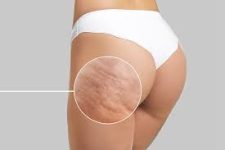How to Test VOC Levels in Your Home: Home Air Check Review
11 min read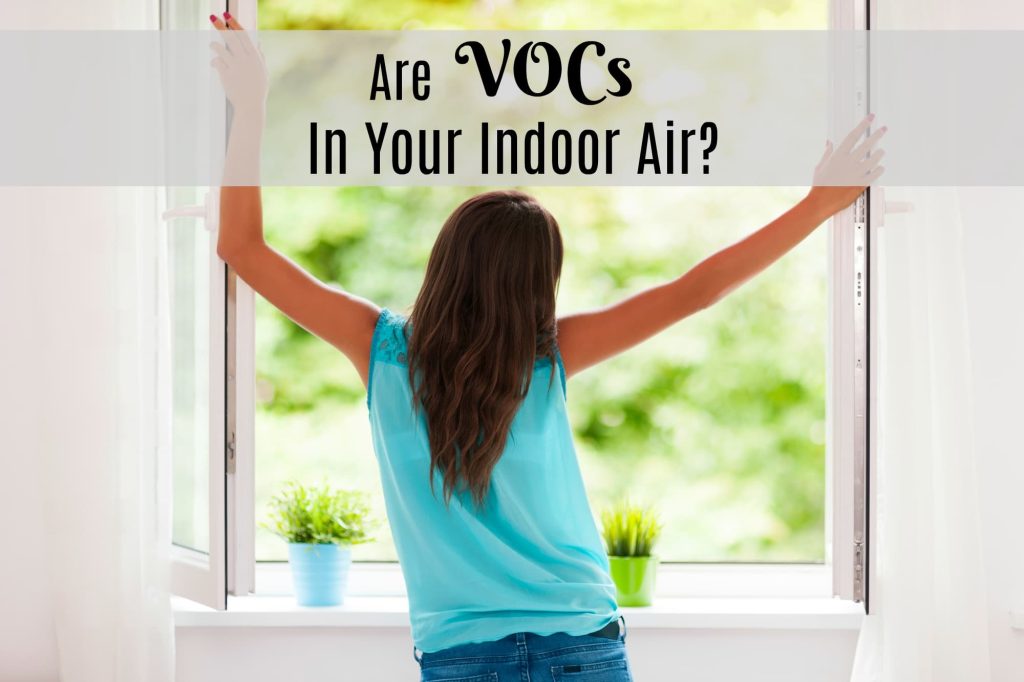
Are you worried about off gassing in your home? Wondering how do you test VOC levels in your home? It’s something I’ve always wondered about and just assumed that it would require a professional appointment and a LOT of money.
Boy, was I wrong.
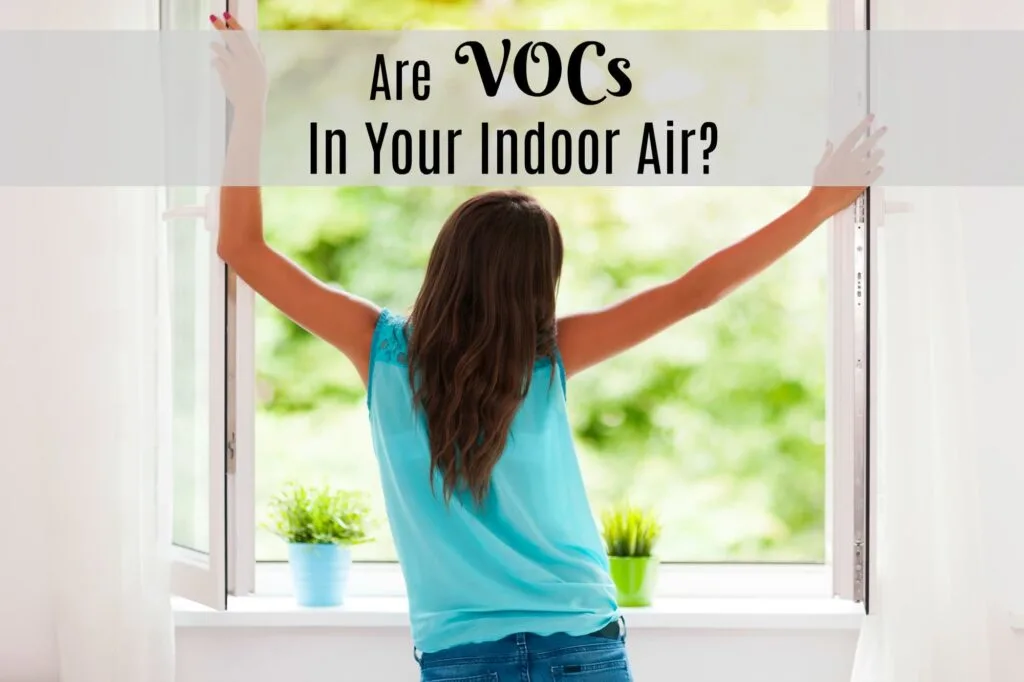
Long story short – I found Home Air Check and couldn’t be happier about how easy it is to test VOC levels and relatively affordable in the grand scheme of things. Plus, it can take as little as 20 minutes to test VOC levels, it’s SUPER easy, and I can do it at my own convenience whenever I want.
My story and testing results below involve living in an RV. However, the experience I had can happen to anyone in any home, especially if it is a brand new construction home or you recently installed new cabinets or flooring.
The VOC testing kit works in any type of home that you live in because the air intake for the test measures per liter of air, regardless of how big or small your testing area is.
Nasty Smell in Your Home: Is it VOCs?
Do you smell a nasty smell in your home or RV and are wondering if it might be toxic chemicals? VOCs often don’t have any smell, but some of them do, such as formaldehyde.
Formaldehyde is a VOC that I can smell. Maybe you are not as sensitive. I don’t know, but when I’m exposed, I know it. I first figured this out when I brought a new chair into my home and soon got really sick.
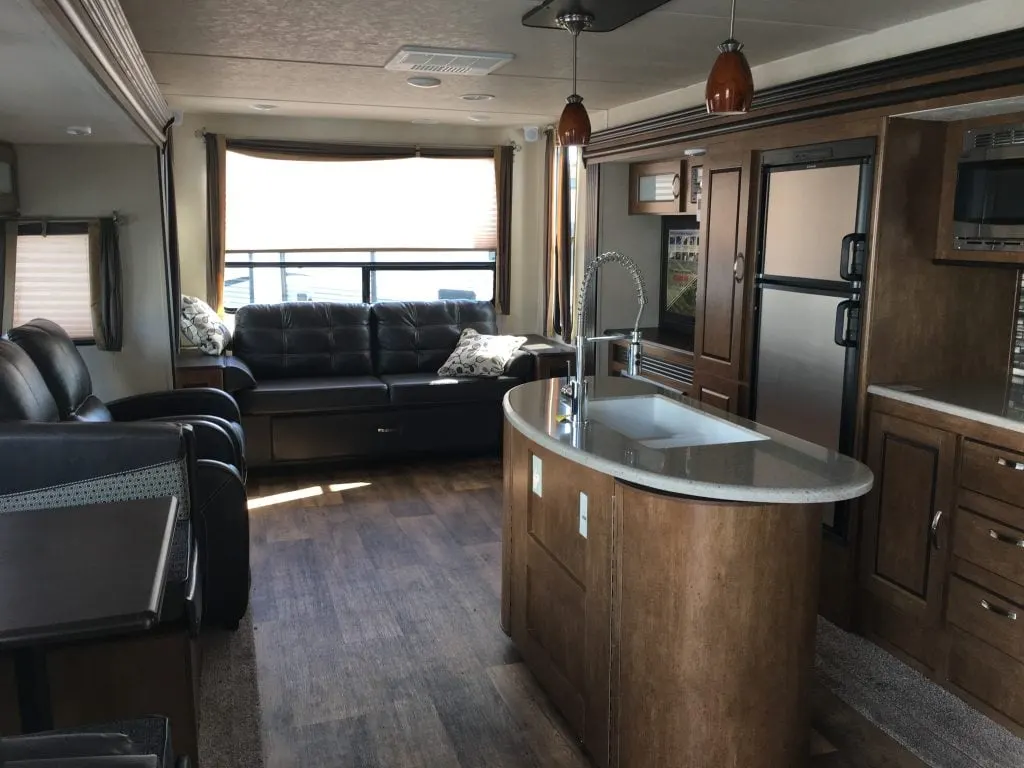
When we decided to sell our home, move to another state, and travel for an RV for a year in between, the last thing on my mind was picking a RV without chemical exposures. It just didn’t even cross my mind.
It should have. It REALLY should have.
When we were stepping inside new RVs in the Florida heat, we could smell the “new car” smell. The paints and finishes and distinctly new odor. It didn’t even cross my mind about being toxic. I was too happy to be planning a year of travel.
In the video below, you can even hear my husband talk about the “new RV smell.” It just didn’t even dawn on me that it was going to be a problem.
We bought a new RV. (Ironically, we didn’t want to worry about water damage and mold issues buying an old one. Nor did we have any time or resources to do repairs, fixes, etc.)
For two months, in the Florida winter (about 85-90 degrees that year), it sat in storage in an open field in the heat, all closed up.

We had about 2 days to move out of our town house, into the RV, and get on the road. This was because our HOA community wouldn’t allow for parking on the street, we had no yard, and there was no place to store it. So it wasn’t aired out at all.
By the time we moved in, the RV was 7 months old from the time of manufacturing.
The first night we got into our RV (after a crazy LONG day of packing up the house and finally taking off in the RV only for the master cylinder in our truck to break about 5 minutes into the drive), it was about 10 p.m. when we finally settled in.
Exhausted, I fell into bed.
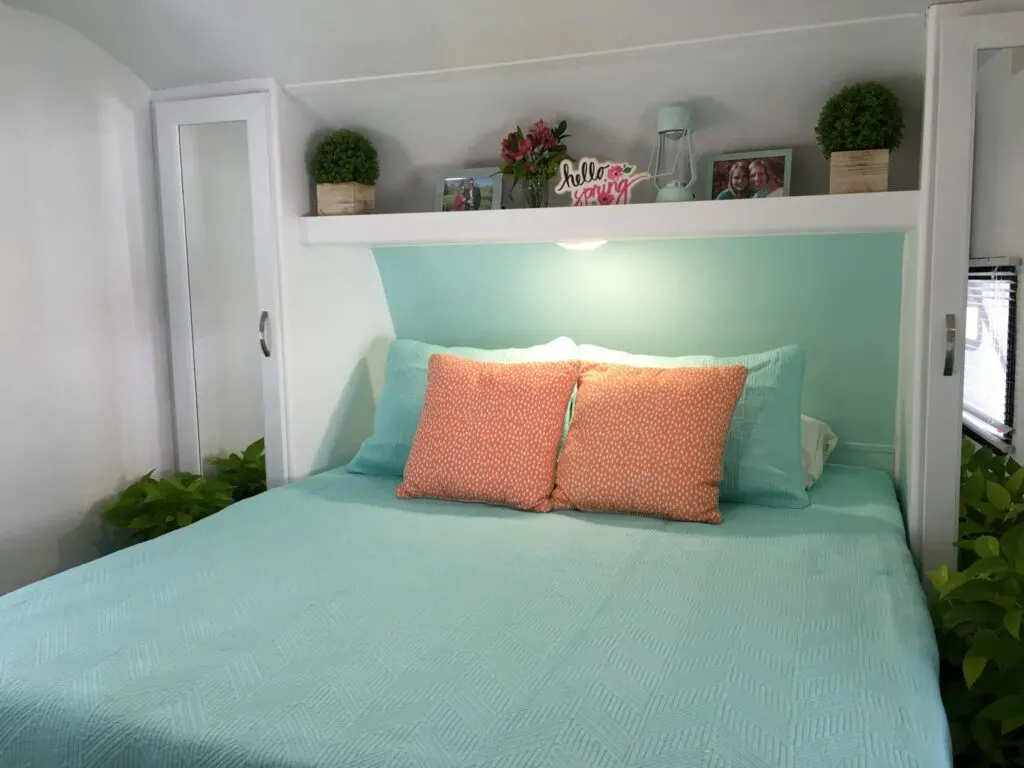
And instantly noticed a smell.
I started panicking. This could NOT be happening. I was committed to living in this RV at this point for a full-time year. My house was packed up. Silently I was screaming, “WHAT AM I GOING TO DO?????”
How VOCs Affect My Health
It wasn’t the smell alone that was worrying me. It was the aching burning sensation in my eyes. The tears streaming out of my eyes as I was laying down because my eyes hurt so bad. My throat was closing up and scratchy with the smell.
I couldn’t sleep. I was literally in pain. And worried sick.
The next morning I woke up coughing. I knew what was happening. It was formaldehyde exposure.
So I opened every single window and the screen door. We put on every fan we had. I stole back the potted pothos plant that I had given to my mom who was still in town (I knew that it was a great air purifier and that I was going to suddenly need it).
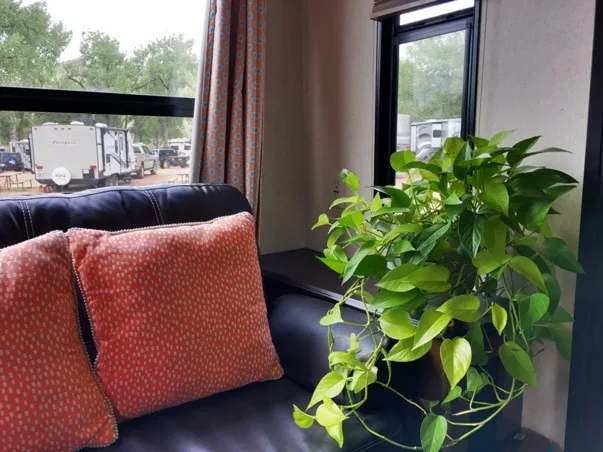
I turned on the air conditioner full blast. We NEEDED to get air circulation in this RV – to get the old air out and new air in. On an 85 degree day in our Florida RV resort, I’m sure fellow campers thought we were crazy running our air conditioning with the window open. I did not care.
This continued on all week. It wasn’t getting better.
Then a deep rumble developed in my lungs. I woke up every morning hacking. I started coughing so violently every morning that I would gag on my own coughing. I couldn’t breathe. I felt like I was having an asthma attack.
Turns out I’m not the only one who has had serious health problems after moving into an RV. Check out this story, too – and the lack of any regulation limits with formaldehyde in RVs.

A month later, after airing out the RV incessantly at every stop and every night, I was still coughing violently. I had never, ever had this cough before moving into the RV.
Something had to be done. And I needed to test VOC levels to know what the air quality inside my RV was like. And I needed to know NOW.
Home Air Check Test Kit Review
I got two test kits from Home Air Check to test VOCs and Formaldehyde specifically. The VOCs test kit also included a mold testing as well.
When we got the box for the test kit, I was kind of surprised at how simple the equipment was. Inside, there was an air pump (all you do is flip a switch and it is activated) and two glass test tubes with testing strips inside.
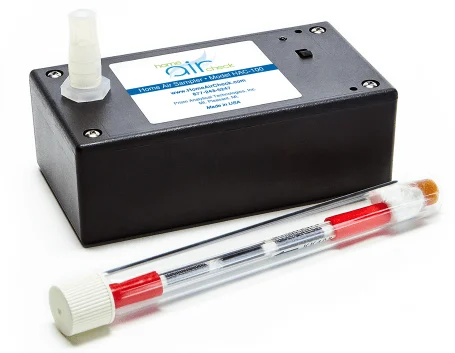
I really had a feeling that this was going to be too complicated and difficult to set up the home test kit myself. After reading the instructions, though, I was amazed at how easy an uncomplicated the Home Air Check test was to test VOC levels.
Here’s a video of the VOC and Mold Test, as well as a dust tape test kit. This was the second time that I used a Home Air Check VOC testing kit:
We kept our doors and windows closed for 24 hours beforehand for an accurate reading. This was hard for me to do because I really wanted to keep airing out the RV. But it was for the best, so that I would definitely know what the VOC levels were in my home.
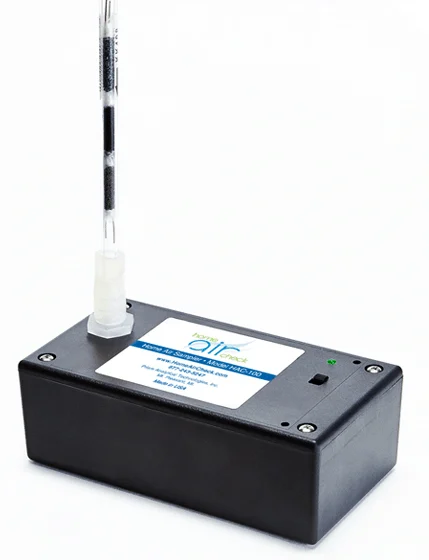
I removed the VOC and Mold Test Kit from the test tube, attached it to the air pump, and set the timer for 2 hours. (Side note: We happened to go outside to enjoy some fresh air in the middle of the test. SOMEHOW, the RV lock got jammed when we were outside and locked us out. We had to call a locksmith who came and picked the lock so that we could get back inside the RV. Oh, the drama! Yet all was fixed within those two hours!)
Next, we did the Formaldehyde test kit. It only takes 20 minutes. The process is the same.
We packed up the box using the enclosed packaging, put the postage-paid label on it, and dropped it off for delivery.
Then I waited anxiously.
VOC Test Results Using Home Air Check Test Kit
A few days later I got a call from Home Air Check. Somehow my formaldehyde test kit (you know – the one that I REALLY wanted to know ASAP) had gotten broken in the mail. Yet the VOC test kit did not. They assured me that I had packaged it correctly, it was just a shipping issue.
You know when God is testing you? I felt like that was definitely happening to me at this time. I SO desperately wanted to know that Formaldehyde concentration. Yet I needed to be patient.

Home Air Check offered to send out another test kit ASAP. They were great to work with.
Unfortunately, when the next test kit came, the air pump’s battery was dead. So I contacted them via email explaining the problem. They offered to rush out another air pump immediately and I received it fast.
With all of my challenges receiving and shipping the test kits, I have to say that Home Air Check was fabulous and fast to work with.
A few days later, my VOC and mold test results were sent via email. Expect the test results to take at least 5 business days.
The results made my jaw drop.
And I wanted to cry.
Then I got PISSED.
My VOC levels in my home were off the chart, according to the test results. No, seriously, they were off the chart!
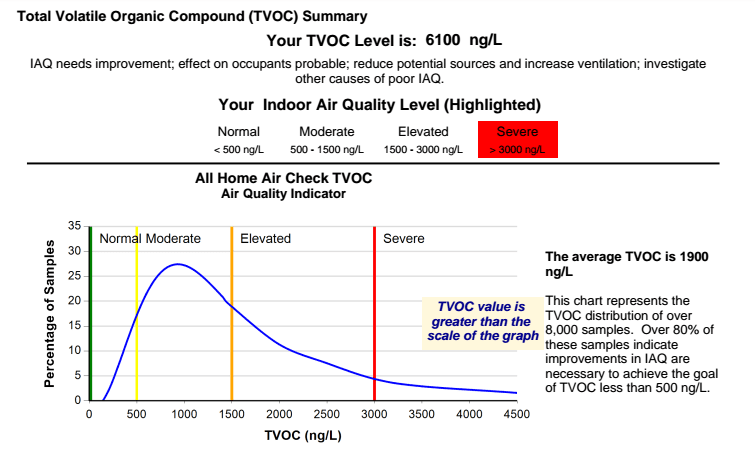
As shown in the Home Air Check test results above, my VOC level in my indoor home air was 6100 ng/L. Look at the red warning: Anything above 3000 ng/L is considered severe.
Notice that the report states that “effect on occupants probable” – YIKES!
So this is the entire VOC nastiness that (according to Home Air Check test results) was in my RV about 6 weeks after we moved in and had aired it out every day and night that was possible and had brought in a VOC-absorbing plant.
That is disturbing. And I’m not alone. These people thought that the VOCs in their RV were making them sick, too.
After I stopped reeling from the elevated VOC level test results, I looked at the mold levels test results. Those were a little surprising, too, considering the tiny house had only been occupied for less than 2 months in weather that was not that humid.
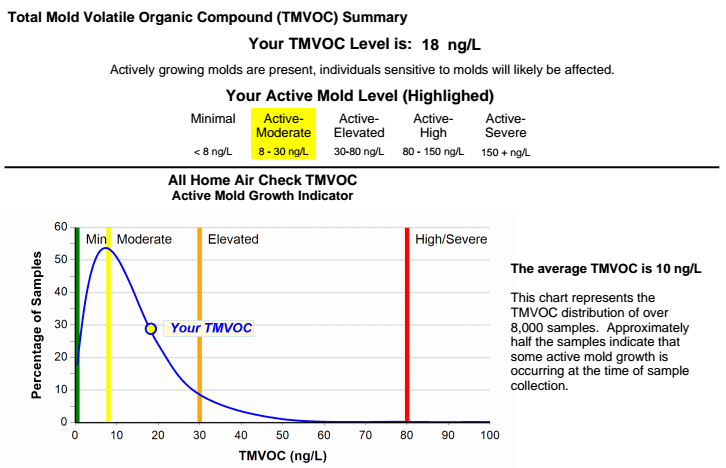
These test results didn’t make me happy, either.
So I was still waiting for those Formaldehyde results. When they came, I had already come to the conclusion that living in this RV was not the healthiest option for me.
Because I was STILL hacking and coughing early in the morning – but only on the mornings after a day when we could not open all of the windows due to either heat or rain.
When we can’t air out the RV, I always end up coughing violently the next day.
The formaldehyde test results weren’t as high as I feared, but at this point, we had been airing out the RV on a daily basis and had two air freshening plants for 3 months when the test was done (the RV was 10 months old at this time).
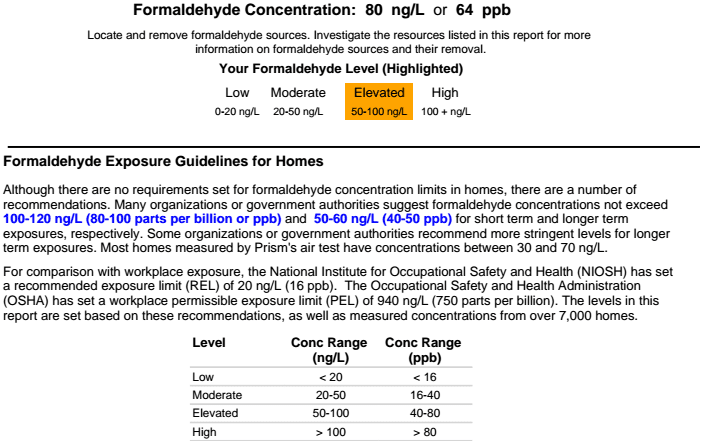
The formaldehyde in the air inside my RV was still elevated, way more so than I was happy with. Especially after having just passed my WELL AP exam where I found out that formaldehyde is especially harmful to health in elevated doses.
Also, my concern was that we were entering summer, and heat and humidity are proven to make formaldehyde escape faster from materials. Which means more of it in the indoor air. And less chance of getting it out with the excessive heat and not able to open the windows.
High Levels of VOCs: What Do I Do Now?
So, what did I do after testing the VOC levels in my air and getting a negative report?
First of all, I didn’t want to jump the gun in getting worried. Maybe the testing kit was wrong, I thought. Maybe somehow it reports a higher concentration if your home is smaller (our RV is 280 square feet, so it was a logical concern).
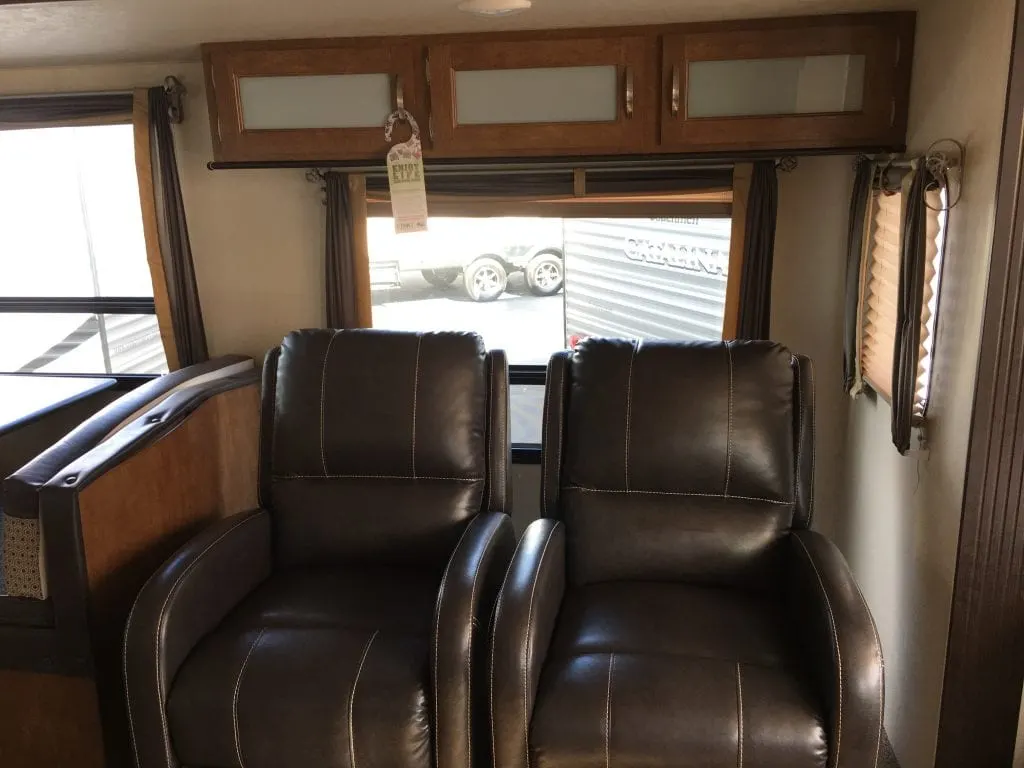
I wrote Home Air Check to ask about my concerns. They responded:
“Thank you for reaching out. Your samples are reported as chemical concentration per liter of air collected/sampled. The size of the sampling location does not impact the sample results.”
So there was that.
I also racked my brain about anything that we could have brought into the RV that might be off-gassing so violently and quickly. We literally brought nothing in but clothes, food, personal care products (I’m pretty careful about them and always have been, so doubtful that is suddenly giving us a VOC spike), bedding and a mattress topper.
None of these things are known for extremely high levels of VOCs.
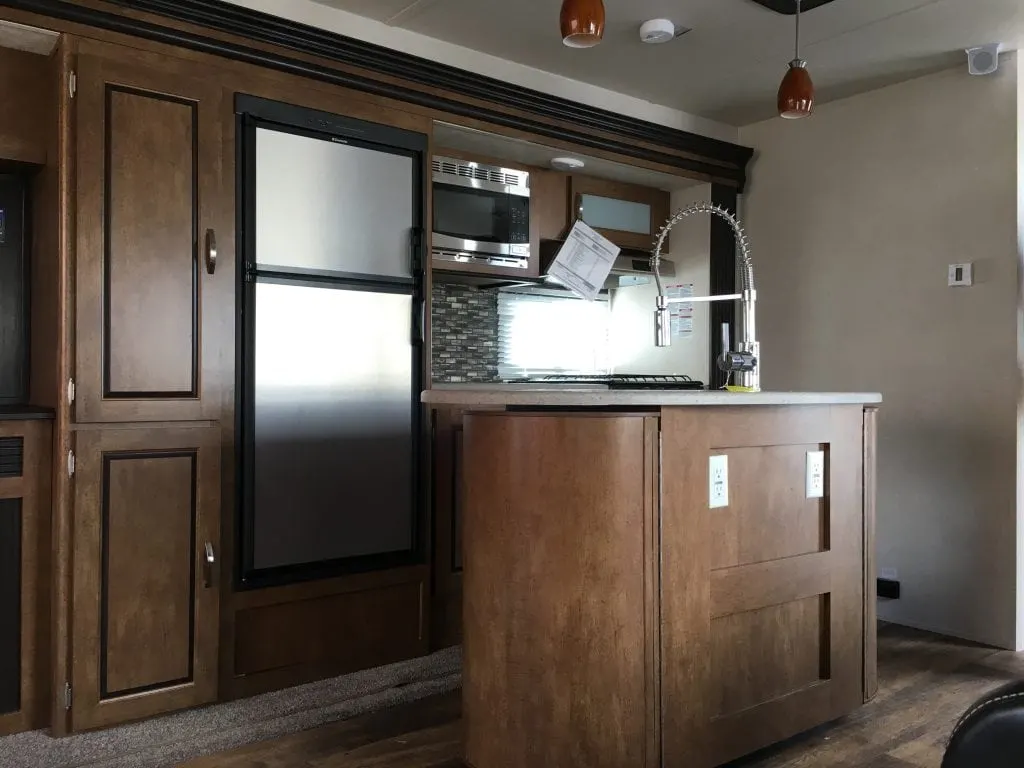
So I came back to the issue of the RV itself and all of its components. RVs aren’t always known for using the highest quality materials. (FEMA trailers used for Hurricane Katrina victims were found to have high levels of formaldehyde.)
And, let’s face it, the cabinets aren’t exactly hard woods and the floor isn’t real wood. There’s a lot of lightweight and manufactured materials that make up an RV.
One of the biggest producers of formaldehyde in anyone’s home – an RV or a “sticks and bricks” home – is cabinetry and furniture made from pressed woods (because of the glues and resins used), as well as the flooring.
I wish I had been able to test VOC levels the very first night we lived in the RV. I’m sure the results would have been even more shocking.
My mitigation strategy to reduce the VOC levels in our indoor air inside the RV have included:
- Opening the windows ALL of the time. Often with the air conditioning or heater running at the same time. It’s a horrible waste of energy. Yet the only way to get fresh air inside.
- Adding VOC-absorbing houseplants into our RV. I have added three plants in total for the 280 square feet. Two golden pothos plants and a “snake” plant (Sanseviera), both of which excel at cleaning and purifying the air. (I’ve added Mini Mingos to my plants for a touch of whimsy!)
- Using AFM Safecoat primer to seal the walls. I don’t know about the effectiveness of this, and will write a separate review.
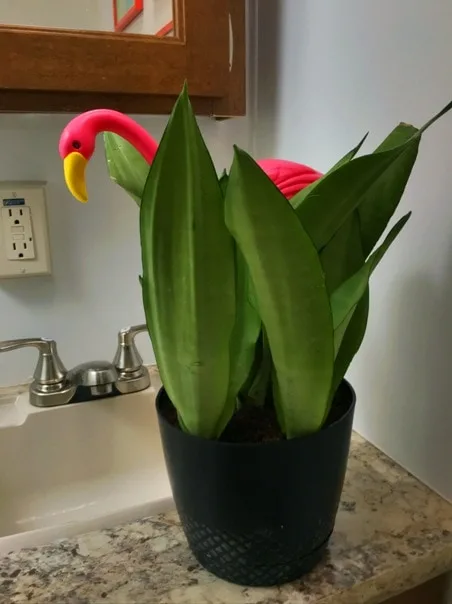
Other than that, there is not much else I can do but pray. Pray that we can afford a healthy house soon so that we can get out of this RV. Pray that the existing levels of VOCs and formaldehyde in our indoor air are not bad. Pray that my continued coughing and gagging on my own coughing in the morning subsides and goes away and that I’m not developing asthma.
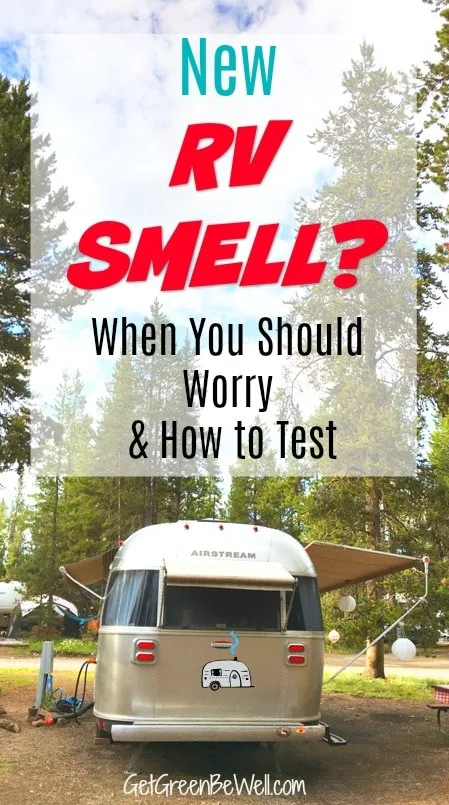
Whether in a home or RV, I encourage you to test VOC levels if you have any question about your home health or are concerned about a “new car smell.” If you know, then you can take action once and for all and fix the problem or just stop worrying.
